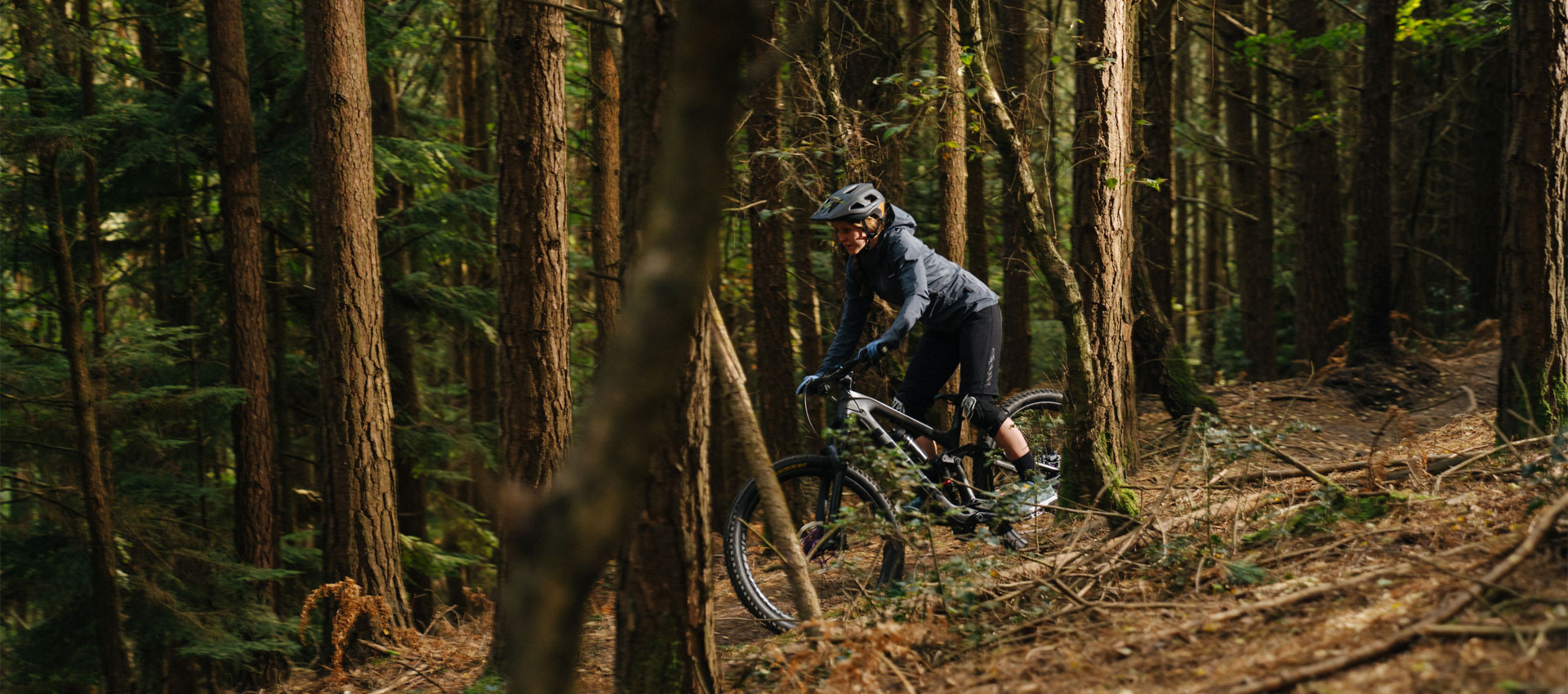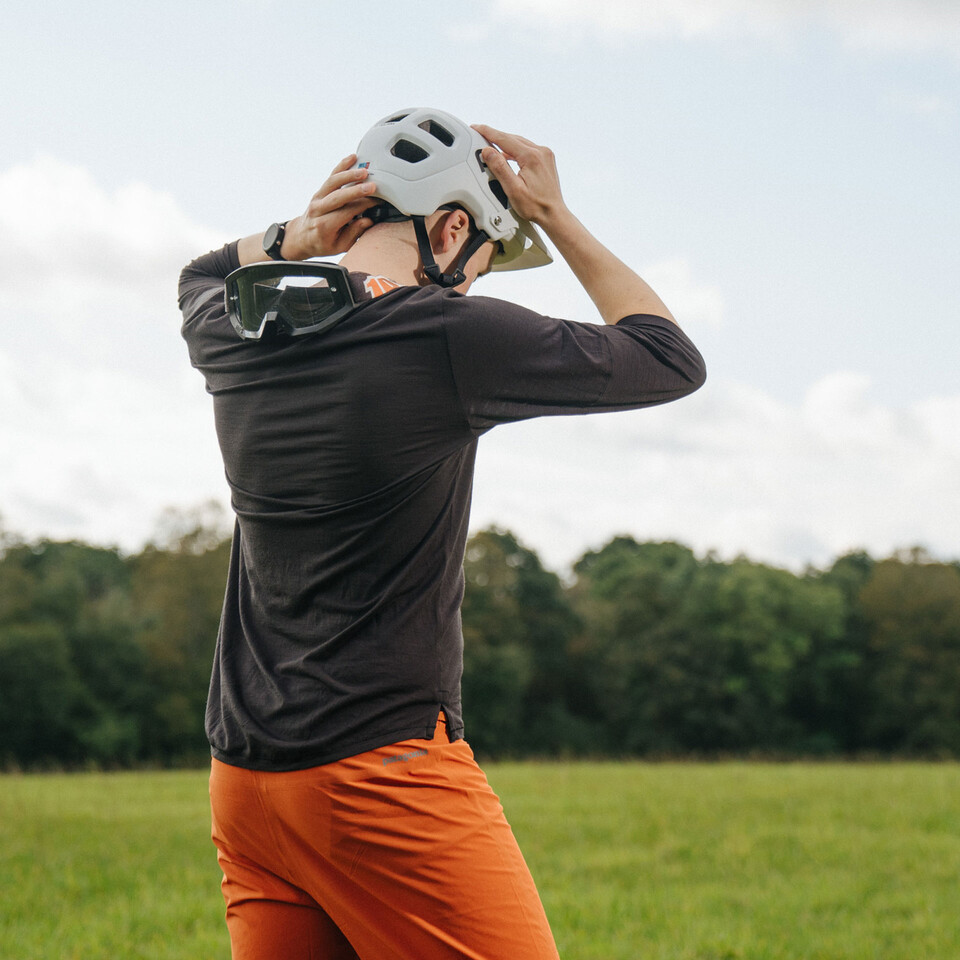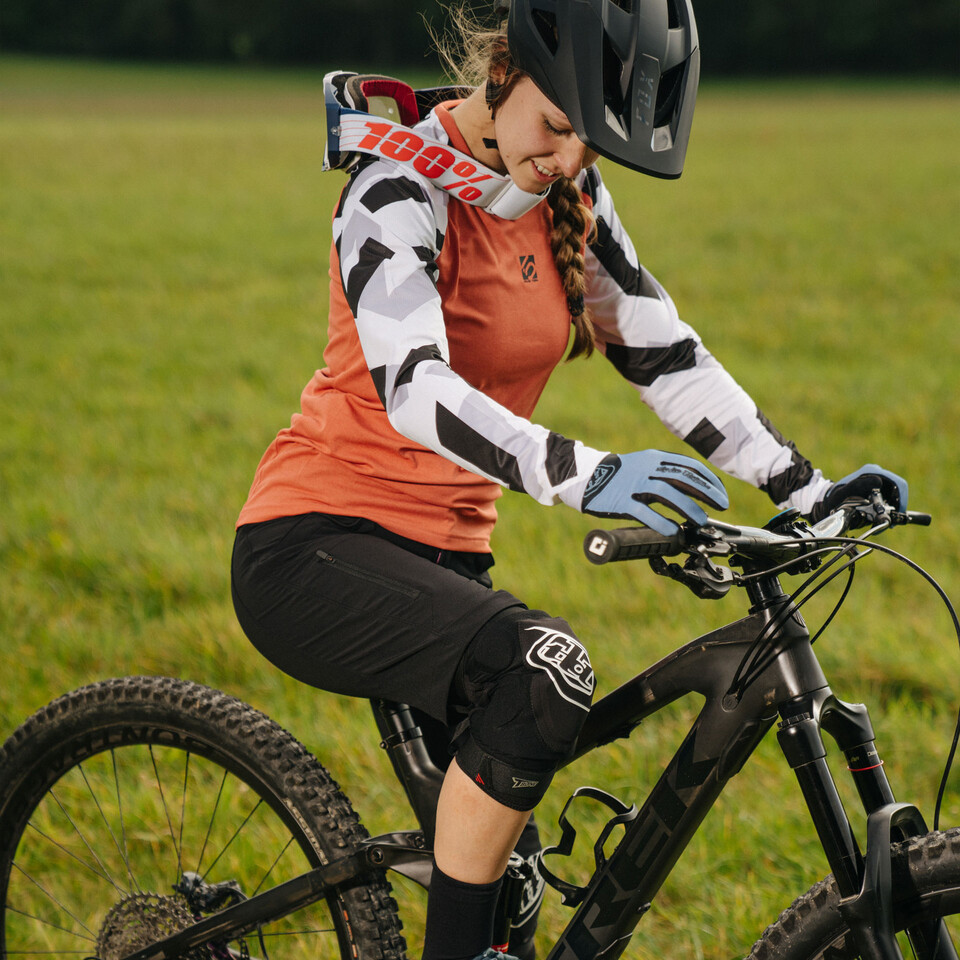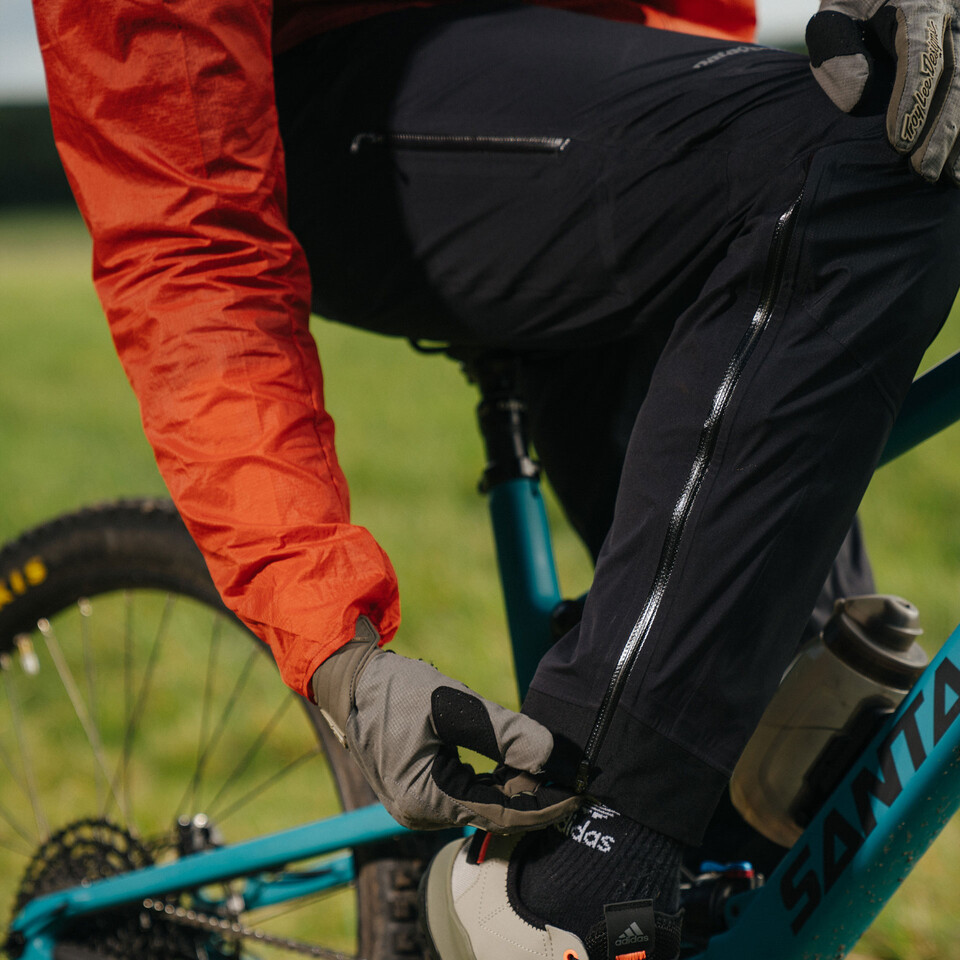
Winter MTB Clothing Guide
Winter Mountain Biking Clothing & Kit
Staying on the trails during the colder months can be a challenge, but with some careful kit selection, you can keep riding, training and exploring on your mountain bike throughout the depths of winter. From base layers to waterproof jackets, there is an array of choices to choose from when fighting windy, wet, cold conditions.
Sleek, comfortable and stylish, the best mountain bike winter clothing does away with the bulky materials of old, delivering thermal warmth without sacrificing mobility and control whilst on the bike. Read on to find out how to optimise your winter MTB clothing wardrobe and fight the freeze.

What Elements of a Weather Forecast Would Affect Mountain Biking
Throughout the colder seasons, the weather forecast is your friend. Riding in inclement weather calls for very different mountain biking clothing to drier conditions, with chilly winter temperatures compounding the frigid effects of rain. Check the forecast before your ride and plan accordingly, packing additional wet-weather kit in case of unexpected rain, sleet or snow.

How to Layer Winter MTB Clothing
Knowing what to wear when mountain biking in the cold can be tricky. Layering systems should protect you from biting cold, soaking rain and freezing winds, all while limiting the risk of overheating.
Traditionally a layering system would consist of a base layer, an insulative mid-layer and a shell jacket. This would offer versatility for a gamut of conditions, allowing you to swap and change as required, even during the temperamental months of late Autumn and early Spring.
The breathability and wicking abilities of winter MTB clothing are as crucial to performance as external weather protection, helping moisture created by the body to escape. Layering is more effective at trapping warmth than a single warm layer, delivering versatility to your ride to excel in whatever temperatures are thrown at you.

How Do I Choose A Base Layer?
Lightweight and breathable, an MTB base layer sits next to the skin and offers effective moisture management and lasting comfort for long stints in the saddle. Often constructed from synthetic materials such as polyester, this layer could be as simple as a mountain bike jersey or as complex as one that prioritises thermal performance, depending on your needs. For mountain biking use, look for a base layer with a cycling-specific fit and low-profile flatlock stitching to prevent irritation from chafing and avoid cotton-rich materials.
For year-round use in cooler climates, merino wool reigns supreme. Its unique, natural properties provide an unrivalled warmth to weight ratio, as well as excellent breathability and wicking performance, quickly drawing moisture away from the skin whilst pushing hard. It is also antimicrobial, which helps to limit the buildup of unpleasant odours, reducing the need for washing.

How Do I Choose A Mid-Layer?
A must-have for the modern mountain biker, an insulated mid-layer provides the bulk of your layering system’s warmth and issues comfort in biting temperatures. A mid-layer sits over the base layer and traps vital core heat, often featuring a windproof design to limit windchill whilst descending on exposed trails.
An example of a mid-layer could include anything from a long-sleeve jersey to a softshell or insulated warm jacket, with heavier-weight options making a great outer layer for dry winter trail sessions. Many mountain bike specific layers will prioritise temperature regulation, offering high levels of breathability to prevent overheating.

How Do I Choose An MTB Winter Jacket?
For temperamental weather and climates prone to rainfall, a high-quality waterproof jacket is essential. Unlike those used for hiking and casual use, mountain bike jackets are bespoke for cycling. They feature a mountain bike specific cut that mirrors the body whilst in the attack position, reducing uncomfortable bunching and improving mobility for unhindered performance. A dropped rear hem defends against spray on wet singletrack, and an over-helmet hood offers comprehensive protection from the elements.
For fast-paced rides on more moderate days, an outer layer can be paired solely with a base layer, limiting bulk to improve control on the bike. Waterproofing and breathability ratings are quantified in millimetres, with higher numbers such as 10,000mm and 20,000mm (10/20k) delivering enhanced protection against water ingress.
The higher the number, the higher the performance, although some premium waterproof fabrics like GORE-TEX will not adhere to this scale. Environmentally friendly PFC-free Durable Water Repellent (DWR) coatings are found on many of our jacket ranges, which quickly shed mud, rain and spray to prevent absorption.

Are There Winter MTB Trousers For My Lower Body?
Depending on your preference, the choice for lower-body mountain bike clothing is between shorts or winter cycling trousers, alongside a base layer for extra protection from icy temperatures. Shorts are a classic choice, but in recent years mountain bike trousers/pants have become the go-to for many all-weather cyclists.
Waterproof MTB Trousers
Trail pants provide additional warmth and protection from mud splatter, feature a pedalling-friendly fit to improve efficiency, and are often compatible with knee pads, making them suitable for more aggressive riding styles. Durable seat and knee panels improve longevity, whilst waterproof options are available to prevent the fabrics from soaking through.

Winter MTB Shoes
Whether you are partial to flat or clipless pedals, choosing the correct mountain bike shoes for winter can save your toes when the mercury falls below zero. Although not winter-specific, many cycling shoes will feature a gusseted tongue and weather-resistant materials, helping to disperse dirt and prevent water from making its way inside the shoe. High-traction soles are a must, with deeper lugs on the toe delivering crucial grip for hike-a-bike situations.
When riding in torrential conditions, choose a winter MTB shoe that features a waterproof liner and a high coverage design, as this will keep your feet dry and warm for the duration of your ride.

Mountain Bike Winter Clothing Accessories
A host of mountain bike winter clothing accessories are available to keep your whole body warm and toasty throughout your ride. Cold weather causes vasoconstriction to set in, reducing blood flow to your extremities to improve core warmth. Although this is useful for homeostasis, riding with cold hands and feet is a miserable experience to be avoided at all costs. There are a host of winter-weight cycling gloves available, but for mountain biking, look for a model that combines thermal, back-hand padding with a thinner palm to retain control and handlebar feel.
For total thermal protection from the cold, pair your winter shoes with breathable merino wool socks. A neck warmer is the perfect accessory to retain warmth, with its versatile design ensuring a multitude of uses.
Eyewear is crucial on wet winter days, helping to keep dirt and grit out your eyes whilst riding muddy trails. With short days and limited light, clear or low-light specific lenses are a must for crystal clear eyesight in all conditions.
Are you looking to hit the trails this winter? Ensure you are ready for whatever Mother Nature sends your way by shopping our extensive mountain bike clothing range. Ride on the road more than off it? Don't forget to read up on winter cycling gear guide for road cyclists.





